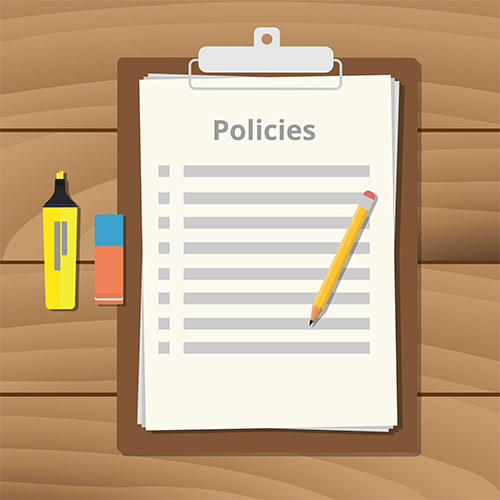Introduction
Are you interested in growing your business while enhancing your employee’s ability to deliver consistent, high caliber service without dramatically increasing the burden of employee management responsibilities on you? If so, we recommend you take several minutes to read on and acquaint yourself with the importance and benefits of written, well-defined Policies & Procedures!
why is this important to you? Simply put, well-written policies and procedures allow employees to clearly understand their roles and responsibilities within predefined limits. Basically, policies and procedures allow management to guide operations without constant management intervention. And constant intervention equates to increase operating expenses that ultimately detract from your company’s profitability. So ask yourself…What condition are my company’s written policies and procedures in? Oh, you say you don’t have written policies and
procedures. Fear not, it’s never too late to take advantage of tools and techniques many of your competitors have, and are using successfully to grow their business and market share.
In order to understand why policies and procedures are so important we need to know what they are, and the differences between them.
What is a Policy?
A ‘Policy’ is a predetermined course of action, which is established to provide a guide toward accepted business strategies and objectives. In other words, it is a direct link between an organization’s ‘Vision’ and their day-to-day operations. Policies identify the key activities and provide a general strategy to decision-makers on how to handle issues as they arise. This is accomplished by providing the reader with limits and a choice of alternatives that can be used to ‘guide’ their decision making process as they attempt to overcome problems. I like to think of ‘policies’ as a globe where national boundaries, oceans, mountain ranges and other major features are easily identified.
What is a Procedure?
The ultimate goal of every ‘Procedure’ is to provide the reader with a clear and easily understood plan of action required to carry out or implement a policy. A well-written procedure will also help eliminate common misunderstandings by identifying job responsibilities and establishing boundaries for the jobholders. Good procedures actually allow managers to control events in advance and prevent the organization (and employees) from making costly mistakes. You can think of a procedure as a road map where the trip details are highlighted in order to prevent a person from getting lost or ‘wandering’ off an acceptable path identified by the company’s management team.
Differentiating Between Policies and Procedures
Policies
- Are general in nature
- Identify company rules
- Explain why they exist
- Tells when the rule applies
- Describe who it covers
- Shows how the rule is enforced
- Describes the consequences
- Are normally described using simple sentences and paragraphs
Procedures
- Identify specific actions
- Explain when to take actions
- Describe alternatives
- Shows emergency procedures
- Includes warning and cautions
- Gives examples
- Shows how to complete forms
- Are normally written using and outline format
Policies and procedures are required when there is a need for consistency in your day-to-day operational activities. Policies and procedures also provide clarity to the reader when dealing with accountability issues or activities that are of critical importance to the company, such as, health and safety, legal liabilities, regulatory requirements or issues that have serious consequences.
Are Your Policies and Procedures Meeting Your Needs?
A few ‘Critical’ signs that your policies and procedures need to be reviewed and updated include:
- An increase in the number of accidents, higher failure rates or costly overruns.
- More staff questions on ‘normal operations’ or a feeling of general confusion within a department or division.
- Employees may also be demonstrating inconsistency in their job performance and there may be an increase in the workforce’s stress levels.
- Customers are increasing complaints.
Benefits of Policies and Procedures
Now that we have a better understanding of policies and procedures, let’s take a look at the major benefits they provide.
- Employees understand the constraints of their job without using a ‘trial and error’ approach, as key points are visible in well-written policies and procedures.
- Policies and procedures enable the workforce to clearly understand individual and team responsibilities, thus saving time and resources. Everyone is working off the same page; employees can get the “official” word on how they should go about their tasks quickly and easily.
- Clearly written policies and procedures allow managers to exercise control by exception rather than ‘micro-manage’ their staff.
- They send a “We Care!” message. ‘The company wants us to be successful at our jobs.’
- Clearly written policies and procedures provide legal protection. Juries apply the ‘common person’ standard. If written clearly so that outsiders understand, the company has better legal footing if challenged in court.
Let’s return to the first question we asked. Are you interested in growing your business without dramatically increasing your burden of employee management responsibilities? If your answer is yes, we recommend reviewing and implementing policies and procedures that are effective, and work on your company’s behalf.


